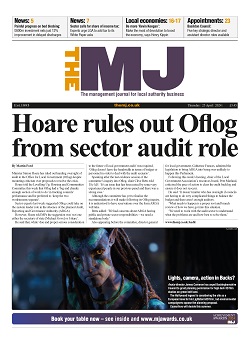How to interpret the Autumn statement? With Christmas approaching, let me use the image of an advent calendar – alluring numbered doors which promise much, but when you prise them open, what is there?
Let’s open the doors and see what was inside for local authorities.
Cost of living: thankfully for some of our most vulnerable residents, benefits and pensions have been increased in the usual way and the Local Housing Allowance has been unfrozen. This will hopefully do something to slow the increasing flow of people being pushed into homelessness by spiralling rents. But it is based on an outer London calculation, and in Westminster we have some of the highest rents in the country (the cheapest flats come in at around £500 a week). London is in the middle of a housing crisis with local authorities grappling with a critical shortage of suitable temporary accommodation needed to match surging demand, which is putting enormous strain on council budgets. We are still facing a housing emergency with an unprecedented strain on housing services.
Hospitality: pubs and bars are a huge part of the West End economy - collectively employing around 90,000 people - so we welcome the extension of the 75 per cent business rate holiday. Anything that assists this industry to weather the after-effects of Covid and the cost of living crisis is helpful.
At this point, the choices become potentially more difficult.
The Government have assumed a £19bn cut in public spending over the next few years, which would put further pressure on council services across the country that have already been cut and risks sending further councils into bankruptcy. In summary, we are borrowing from the future to fund benefits now.
The Government did not lift the cap on the amount of housing benefit payments that councils can retain from residents in temporary accommodation, meaning that we still expect these costs to remain high. There was no announcement on the Household Support Fund which has formed an important part of councils’ response to the cost of living crisis. This means we cannot plan ahead in the same way, and do not yet have confidence that we will receive the £3.9m we have been provided this year to support the most vulnerable in these still challenging times.
Councils also need to see the detail of the new high-speed planning proposals which, it is promised, will allow local authorities to recover the costs of major business planning applications if they meet guaranteed timelines. The theory sounds good, but as the busiest planning authority in the country, we need to see the detail. What time periods are covered? Will this mean fewer planners available for household and resident applications to beat the clock on big applications? Will community voices be squeezed out as a result?
The reality is the overall outlook for Westminster residents remains difficult. Living standards look set to decline and economic growth is sluggish with 4,500 Westminster teenagers over 16 looking for work. As a council, we are doing what we can - for example putting £90m alongside private sector partners into renovating Oxford Street. However, life for traders is tough on high streets elsewhere in the City.
The bigger picture is equally bleak. The energy price cap has just gone up by five per cent, and fiscal drag will continue to increase tax burdens for everyone
Figures from the Office for Budget Responsibility show that the UK is seeing the biggest fall in living standards since the 1950s. In the face of that, Westminster City Council is putting over £9m of its own funding into a £19m cost-of-living support package to ensure we are doing all we can in hard times to help our residents - but we cannot relieve the burden on them on our own.
Cllr Adam Hug is leader of Westminster City Council



